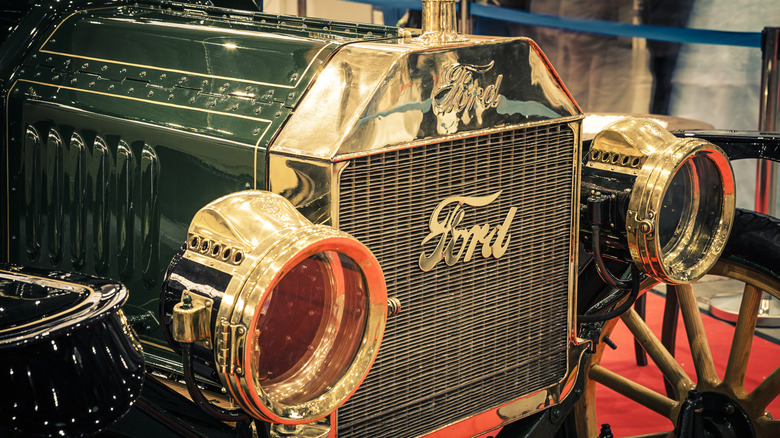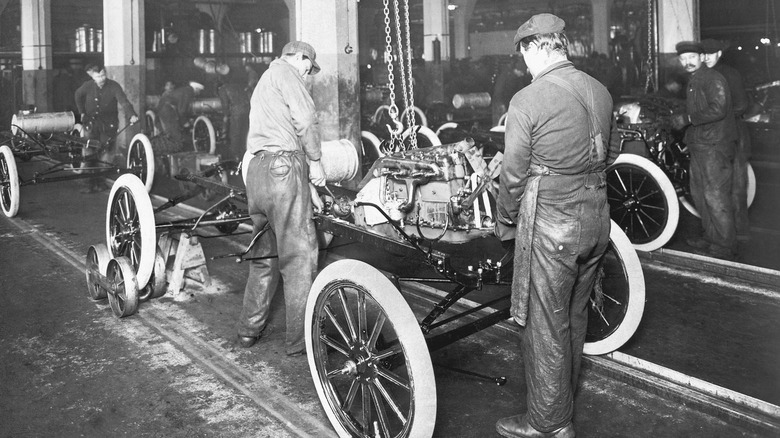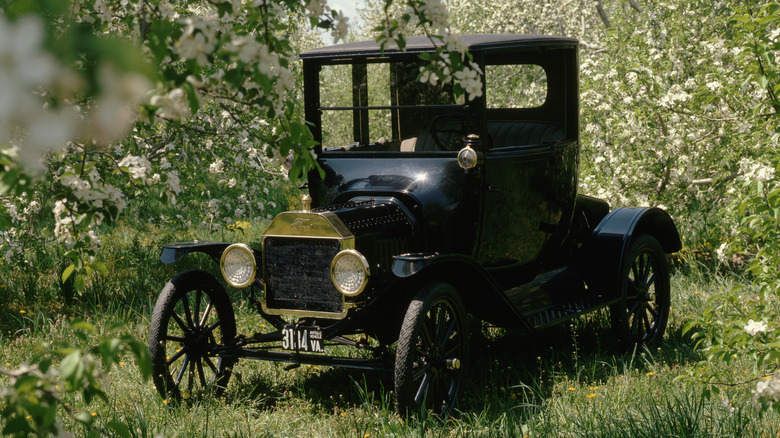How Much Horsepower Did The Ford Model T Have?
Ford introduced the Model T way back in 1908, and production continued for nearly two decades before finally coming to an end in 1927.
Engines of this era, even four-cylinder engines like the unit used in the Model T, had considerably high capacities by modern standards. Combine that with the fact that the Ford's inline-four sported a long stroke, and you wind up with a relatively impressive torque output — 83 lb-ft to be precise. Such a relatively high torque figure ensured the engine was tractable and versatile, ideal for the Model T's numerous applications. But, how much horsepower did the 2.9-liter inline-four develop?
Thanks to the engine's low compression ratio — just 4.5:1 — the power output was quite uninspiring, with just 20 horses to boast. However, tuning companies and engineers alike began to develop high-compression heads, which would enable the engine to unlock a precious few extra horses. In addition, brake upgrades — such as 'rocky mountain brake kits', and Ruckstell two-speed rear-axles — were also manufactured. These modifications enabled folk to make the most of the Model T's modest output, by letting drivers brake later and harder, or access higher speeds, without having to compromise the construction and reliability of the engine.
Ford had to develop an engine that would excel in a wide range of applications
Throughout the Model T's 19-year production, a wide array of models was built, including town cars, roadster models, two-seat runabouts, and much more. In order to ensure each model was best tailored to the job at hand, an impressively versatile engine was required, and Ford developed just such a powertrain.
The engine of choice was a 2.9-liter (177 cu-in) inline-four. Around 16 million units were manufactured and equipped to various Model T Fords throughout the car's 19-year production run. The design of this simple engine hardly changed throughout this period, and even continued in use after the Model T was discontinued. Naturally, due to the huge number produced, thousands of running and serviceable examples of the engine are still in use to this day.
As the years rolled on by, and the Model T became outdated, owners looked to upgrade their Ford's powertrain. Hot-rodders managed to completely overhaul these pre-war classics, and rebuild them from the ground up with significantly more powerful flathead V8 engines.
The Model T was mass-produced and priced to dominate the market
While cars had certainly existed before the Model T — since 1886, to be precise — it was Henry Ford who revolutionized the automotive industry with the Model T, by introducing not only the modern workweek, but also by popularizing the use of an assembly line. This meant that, rather than one employee building a car, they were given just one task — such as installing a specific component, perhaps brakes or interior fittings — and they would complete this task on many cars in one day. As a result, workplace efficiencies improved dramatically, which helped Ford deliver the Model T at affordable prices, bringing motoring to the masses.
Comparing the Model T's pricing to that of an in-period competitor reveals just how much more accessible it was for everyday folk. The 1908 Buick Model 10, a rival of the Ford's, sported a base price of $900, with the Model T costing $75 less in the same year. Perfecting the use of an assembly line allowed Ford to lower prices significantly further; by 1913, a touring Model T cost just $600 – and Henry Ford managed to half the cost to just $300 by 1915.


